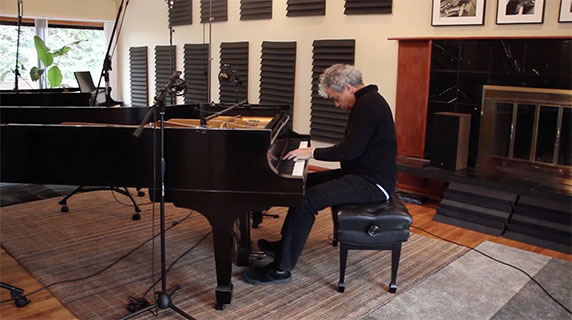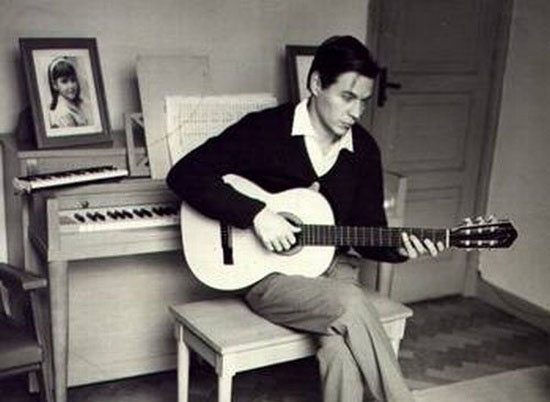

Jovino Santos Neto
Three-time Latin Grammy nominee Jovino Santos Neto, a master pianist, composer and arranger, is among the top Brazilian musicians working today.
Live Seminar Resources
Live Seminar Resources
PDF Downloads
- Só Danço Samba Score
Join PianoGroove Pro to access all downloads and learning resources.
Download theory supplements, midi files, chord changes and full note-for-note transcriptions of every lesson.
- O Grande Amor Score
Join PianoGroove Pro to access all downloads and learning resources.
Download theory supplements, midi files, chord changes and full note-for-note transcriptions of every lesson.
- Olha Pro Ceu Score
Join PianoGroove Pro to access all downloads and learning resources.
Download theory supplements, midi files, chord changes and full note-for-note transcriptions of every lesson.
Related Lessons
Forum Threads
Seminar Description
Seminar Description
Exploring the Music of Antônio Carlos Jobim
Welcome to this seminar on the music of Antônio Carlos Jobim, one of the most influential Brazilian composers of all time. Jobim’s work extends far beyond the Bossa Nova label, encompassing a vast repertoire of compositions that include orchestral works, sambas, and ballads. In this lesson, we explore some lesser-known but equally beautiful pieces, analyzing their harmonic and rhythmic intricacies.
The Legacy of Jobim
Antônio Carlos Jobim (1927-1994) is often referred to as the father of Bossa Nova, though his music spans a far wider spectrum of styles. His compositions integrate the rich harmonic language of jazz, the rhythmic drive of Brazilian samba, and the lush textures of French impressionist composers like Ravel and Debussy. His training with German composer Hans-Joachim Koellreutter also contributed to his sophisticated harmonic approach.
Despite his success with early Bossa Nova hits, many of Jobim’s compositions remain underexplored. In this lesson, we focus on three of his compositions: Só Danço Samba, O Grande Amor, and Olha Pro Céu, breaking down their chord progressions, voicings, and rhythmic feel.
Só Danço Samba – Understanding Samba Grooves
One of Jobim’s classic sambas, Só Danço Samba, was written in 1963 with lyrics by Vinicius de Moraes. This tune showcases a straightforward samba rhythm that is deeply ingrained in Brazilian music.
Chord Progressions & Harmonic Movement
The main progression revolves around:
- C69 to F7
- D7 to G-7
- G7 resolving to C69
The characteristic Brazilian harmonic device of using a minor 6 chord (C-6) as a substitute for a dominant chord (F7) is evident here. This smooth harmonic movement is frequently found in samba and choro music.
Samba Rhythms & Left-Hand Comping
The left hand plays a syncopated, percussive bass pattern, keeping the pulse steady while the right-hand voicings flow melodically. Using ghost notes in the left-hand comping adds swing and groove to the rhythm.
Chromaticism in Melody & Improvisation
Jobim’s melody incorporates chromatic passing tones that create smooth, voice-led transitions. When improvising, consider:
- Targeting the 9th and 13th on dominant chords
- Using chromatic approach notes to embellish melodic phrases
- Experimenting with flat 5 and sharp 5 tensions on dominant chords
O Grande Amor – Exploring Jobim’s Harmonic Sophistication
This beautiful ballad showcases Jobim’s deep harmonic knowledge. The structure follows an A-B form, where the B section subtly deviates from the original harmonic path before resolving back to the tonic.
Harmonic Highlights
- The use of B7/F#, which can be analyzed as an F# diminished leading to E minor.
- The presence of diminished passing chords, common in Jobim’s compositions.
- The minor 6 voicing (G-6) functioning as a dominant chord (C7 over G).
Diminished Chord Functionality
One of Jobim’s signature techniques is the use of diminished chords as passing harmonies. For example:
- Moving from A diminished to Bbmaj7 creates a smooth, chromatic bass movement.
- The diminished 7 chord (e.g., A°7) can resolve in multiple directions, adding harmonic flexibility.
Interpretation & Phrasing
Ballads like O Grande Amor should be played with expressive rubato, allowing for a natural ebb and flow. This is particularly true when playing solo piano arrangements, where the phrasing can imitate a vocal line.
Olha Pro Céu – Melodic Motion & Brazilian Harmony
One of Jobim’s lesser-known gems, Olha Pro Céu (Look to the Sky), captures the introspective beauty of his writing. The lyrics describe the vastness of the sky as a metaphor for love, and the harmonic motion reflects this theme through descending bass lines and chromatic resolutions.
Harmonic Features
- The Imaj7 to I-7 movement (Dmaj7 to D-7) is a classic Jobim technique, shifting from major to minor within the same tonal center.
- The chromatic bass motion in progressions like E-7 to C7 adds fluidity and harmonic color.
- The A-flat diminished chord is used as a passing chord, creating a brief moment of tension before resolving.
Rhythmic Feel & Interpretation
Unlike Só Danço Samba, which is based on a syncopated samba groove, Olha Pro Céu has a triplet-based feel. This triplet subdivision contrasts with the underlying 16th-note groove of Brazilian rhythms, giving the piece a floating, dreamlike quality.
Voicing Techniques
- Using quartal voicings (stacked 4ths) to create open-sounding harmonies.
- Exploring inner voice movement, particularly chromatic shifts within chord structures.
Practice Tips
Explore Minor 6 Chords as Dominants
- Practice moving between C-6 and F7, treating them as interchangeable.
- Experiment with minor 6 voicings in different keys.
Use Diminished Chords for Chromatic Motion
- Play G°7 resolving to A7, then try A°7 resolving to Bbmaj7.
- Notice how diminished chords can be used as pivot points.
Think Melodically When Improvising
- Take motifs from Jobim’s melodies and use them in your solos.
- Focus on short, lyrical phrases rather than long scalar runs.
Refine Your Rhythmic Feel
- Play along with recordings of authentic Brazilian rhythm sections.
- Emphasize lightness in touch for faster tempos.
Experiment with Sliding Chord Voicings
- Try Cmaj7 → C#dim → Dm7, using voice leading for smooth transitions.
- Incorporate grace notes and chromatic enclosures in your comping.
Final Thoughts
Jobim’s music is a masterclass in harmonic beauty, rhythmic subtlety, and melodic lyricism. While his best-known pieces like The Girl from Ipanema and Wave are widely played, diving into his lesser-known works reveals even deeper levels of sophistication.
By internalizing his harmonic and rhythmic concepts, you’ll not only improve your Bossa Nova playing but also gain a richer understanding of jazz harmony and Brazilian music.
Take time to explore these pieces, experiment with different voicings, and most importantly, enjoy the process of discovering Jobim’s musical world.
Are you interested in learning more about Brazilian jazz? Let us know which pieces you’d like to explore next!






Really looking forward to this one. I also wanted to say I really enjoyed seeing Jovino at the Barbican in London in May with Hermeto. Great show and a lovely suprise to see Jovino!
Hi Richard,
I have just finished the light up keyboard, added the notation graphics, and also ensured that the correct enharmonic equivalents are shown.
That’s awesome you saw Jovino & Hermeto live at the Barbican – it must have been a great show!
Cheers,
Hayden
Jovino,
I really enjoyed this lesson. Sorry I couldn’t be here for the live event but wow I love the progressions and the tips given here. Simply amazing to watch you and also also have you explain your thinking of how to apply this to music presentation. Thank you so much for sharing.
Steve
Hi Jovino,
my name is Trevor and I watched your recent tutorial on “Bosa Nova Workshop” September 7th 2022.
I old you I was writing a song to be performed in the Samba style. To give me some help, I was studying your tutorial “Antonio Carlos Jobin Workshop”.
I was using the song “So Danco Samba” as a source for the chords.
The question I have to ask, is that since the Part A for “So Danco Samba” is clearly in the key of C, why is there a F7 in the chord progression ? The melody notes playing over the F7 chord are A, so the chord of C6/9 could have been used for 2 chords in a row.
In my song [also in C] I have the move from Cmaj to Fmaj and I am inclined to use Cmaj 6/9 to Fmaj7.
I want to explore all the possibilities.
Thankyou